Great Works Come Home
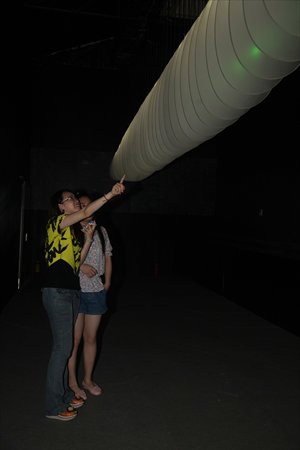
Visitors admire architect Shao Weiping's work Sequence. Photos: Courtesy of Xintiandi
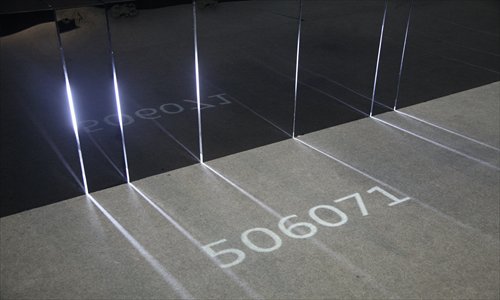
Variation by Wei Chunyu
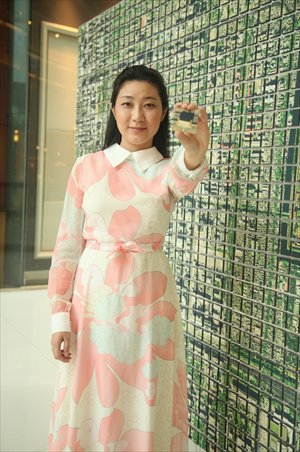
Tao Na poses with her artwork Palace in the Sky.
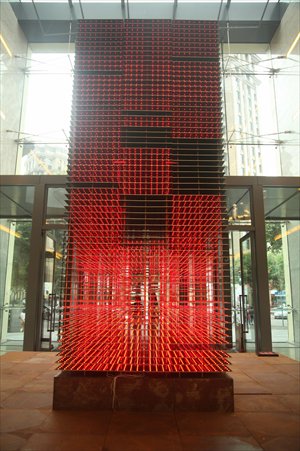
Lightopia by Xu Dongliang
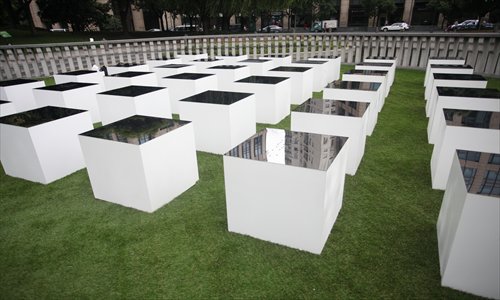
Square Garden by Wang Yun
On the northeastern coast of Italy, a time-honored celebration for both artists and art lovers, the 55th Venice Biennale is in full swing. Meanwhile, thousands of miles away, on the southeastern coast of China, Shanghai is also playing host, presenting the Chinese artworks featured at last year's 13th Venice Architecture Biennale to local audiences.
During the 2012 Venice Architecture Biennale, the China Pavilion featured five distinctive installation works as part of a collaborative exhibition entitled Originaire.
"Living in a society with an explosion of information, I think it's necessary for us to pay more attention to the origin of our thoughts, of our creation that pushes society forward," said Fang Zhenning, the curator of the exhibition.
All five of the installation works are now on show at Xintiandi, marking the first-ever event on the Chinese mainland to reproduce the national pavilion at the Venice Architecture Biennale.
A challenging task
"It cost over 2 million yuan ($326,036) to install the artworks in Venice last year, and few venues in the country are willing to spend so much money on a nonprofit event," Fang told the Global Times. Fang noted that the cost of staging the exhibition in China was almost 1 million yuan.
What really mattered to Fang and the artists was how to showcase the works in the right way. "I want to maintain both the visual effect and the safety of the installation works, thus I may have been unhappy if the venue couldn't satisfy my requirements and wanted to make changes for the sake of business," said Fang, who revealed that he turned down invitations from other venues in the country and had been very careful during the cooperation with Xintiandi.
Currently, at Taipingqiao Park (Huangpi Road South by Xingye Road), visitors can see Sequence by Shao Weiping, Variation by Wei Chunyu, and Square Garden by Wang Yun. Meanwhile, Xu Dongliang's Lightopia and Tao Na's Palace in the Sky are on display at Xintiandi Style (245 Madang Road). The exhibition will continue until August 31.
Minimalist style
"The standards to select the architects and artists above others are: firstly, their works have been critically acclaimed in China and abroad; secondly, their works have a minimalist style, as both David Chipperfield, the director of this biennale, and I are minimalist; thirdly, they are able to realize their vision for the installation works on their own," Fang told the Global Times.
Focused on two basic forms, round and square, the artworks reflect the organic interaction and mutual permeation that occurs among art, architecture, space, installation and communication, according to Fang.
Architect Shao Weiping arranged 96 pieces of oval plexiglass in a winding line in the air, which resembles the model sections cut along an annular concept construction of a building that he designed.
Meanwhile, architect Wei Chunyu applied prime numbers in Variation to express his understanding of "Originaire," as prime numbers were regarded as numerical fundamentals by ancient Chinese mathematicians, and from this perspective, prime numbers can be seen as the fundamentals of the world.
In Square Garden, architect Wang Yun shows a matrix composed of 36 cubes, each painted white. The reflective stainless steel plate installed on top of each cube is dotted with different compositions of holes, which are based on the spatial relationship of traditional villages and settlements on the earth.
Hit in Venice
Xu Dongliang's Lightopia was one of the big hits in Venice last year. A pioneering lighting designer, Xu installed over 40,000 LED dots on 603 black aluminum plates that pile up to resemble a tower. When the work is switched on, the dots produce red light and form certain patterns, for instance, flames.
"The LED dots are the fundamental element that the light industry is built on, and they have also become the source of light in our daily life with more and more LED lights used in appliances," explained Xu. "However, the great number of LED dots also implies an overwhelming mass production in the light industry, which may lead to problems in the future."
Lightopia also integrates traditional Chinese culture in its structure: there are nine plates on each parallel level, as traditionally, Chinese cities are divided into nine sections. The tower is made up of seven blocks to resemble a seven-story Buddhist tower.
Born in 1980, Tao Na is the only non-architect among the five participants, and she is also one of the youngest Chinese artists ever to be featured in the China Pavilion at the two biennales in Venice.
Palace in the Sky is made up of three layers of 10,000 magnetic plates covered with rice paper. The first layer depicts the landscape of Beijing, the second features the landscape of Mars, and the third reveals the boundless galaxy. Each magnetic plate is numbered, and audience members are invited to take one plate away with them, until only the third layer is left.
"What I want to convey through this artwork is the fragility of the environment and the tininess of humankind," said Tao.
Tao is also keen to encourage the interaction between audiences and her artworks. "The interaction with Palace in the Sky is meant to inspire audiences to reflect upon the relationship between the universe, human civilization and architecture," she added.